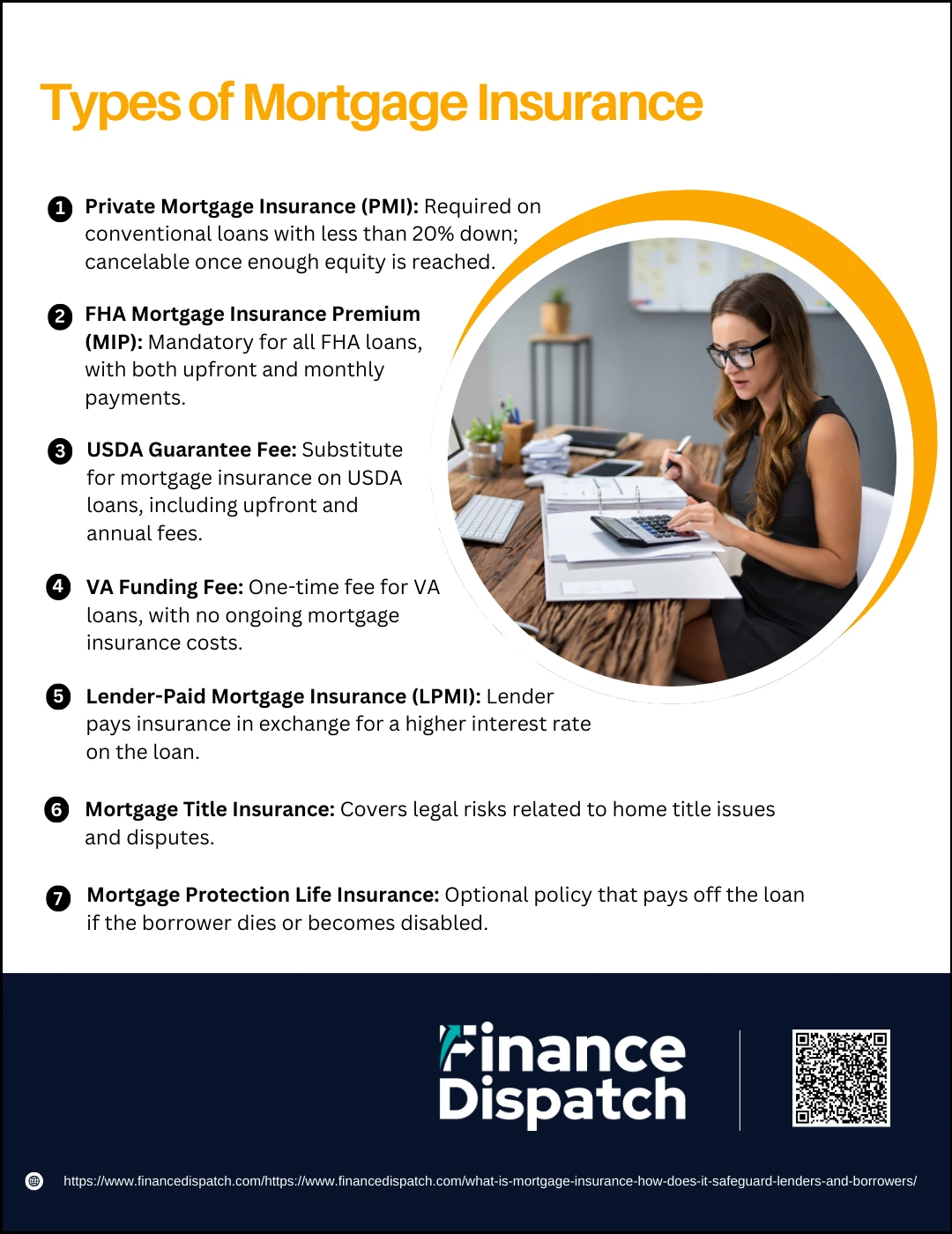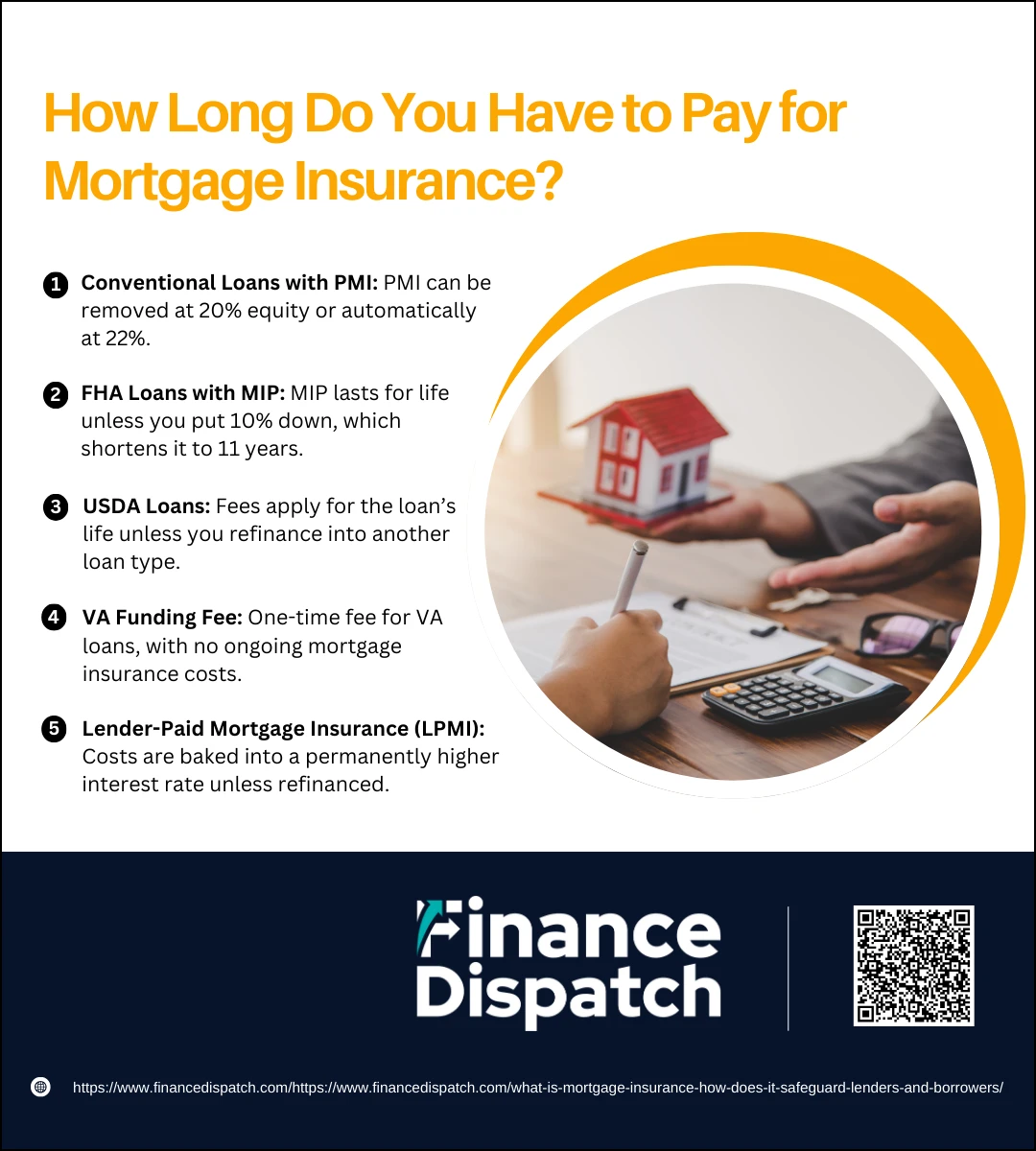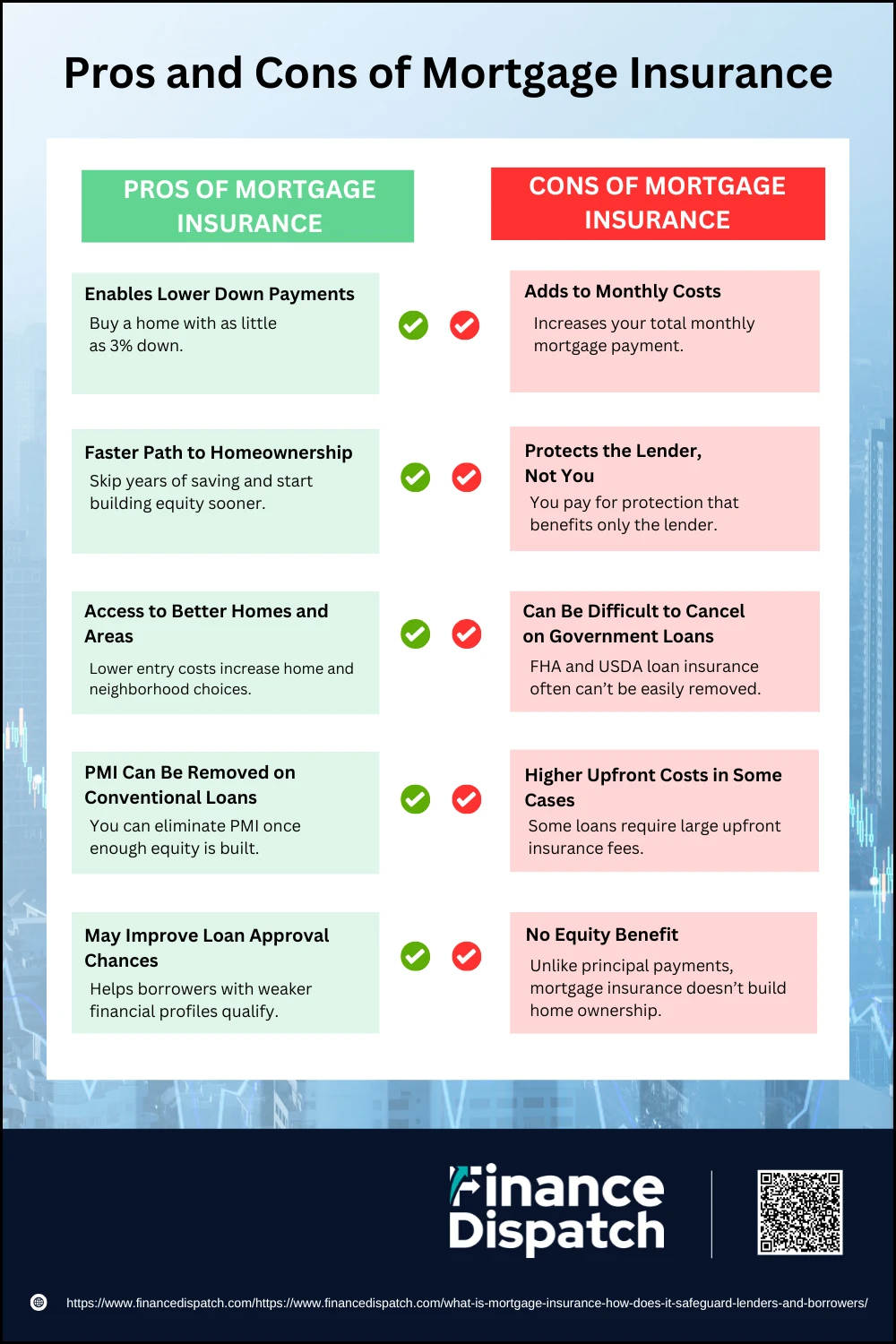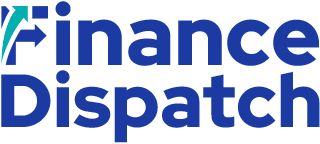When you’re buying a home, especially with a down payment of less than 20%, you may encounter something called mortgage insurance. While it’s often seen as an added cost, mortgage insurance actually plays a critical role in making homeownership possible for many buyers. It acts as a safety net—not for you directly, but for the lender—by protecting them in case you fall behind on your loan payments. But here’s the twist: even though it’s designed to shield the lender, mortgage insurance can also benefit you by opening doors to loans you might not otherwise qualify for. In this article, we’ll break down what mortgage insurance is, how it works, and how it helps both lenders and borrowers navigate the homebuying process with more confidence.
What is Mortgage Insurance?
Mortgage insurance is a policy designed to protect the lender—not the borrower—if the borrower fails to repay the mortgage loan. It’s typically required when a homebuyer makes a down payment of less than 20% of the home’s purchase price, which increases the lender’s risk. By covering a portion of the lender’s loss in case of default or foreclosure, mortgage insurance makes it possible for lenders to approve loans with lower upfront payments. There are different forms of mortgage insurance depending on the loan type, such as private mortgage insurance (PMI) for conventional loans and mortgage insurance premiums (MIP) for government-backed loans like FHA or USDA. Though it adds to the overall cost of homeownership, mortgage insurance enables more people to qualify for loans and enter the housing market.
Why is Mortgage Insurance Required?
Mortgage insurance is required primarily to reduce the risk lenders take when approving loans for borrowers who contribute less than 20% as a down payment. A smaller down payment means the borrower has less equity in the home, making the loan riskier in the eyes of the lender. If the borrower defaults, the lender could face significant financial losses—especially if the home’s value has dropped. Mortgage insurance offsets this risk by reimbursing the lender for a portion of the unpaid balance in case of default. This protection gives lenders the confidence to approve more loans and offer financing to a broader range of homebuyers, including those with limited savings or less-than-perfect credit.
Who Does Mortgage Insurance Protect?
Mortgage insurance is designed to protect the lender, not the borrower. If you stop making your mortgage payments and the loan goes into default, the insurance helps cover the lender’s financial loss—not yours. It ensures the lender is compensated if your home goes into foreclosure and the sale doesn’t fully cover the remaining loan balance. While you, as the borrower, are the one who pays for the insurance, it does not shield you from foreclosure or credit damage. However, by reducing the lender’s risk, mortgage insurance can work in your favor indirectly—it makes it easier for you to qualify for a mortgage with a lower down payment, giving you earlier access to homeownership.
 How Does Mortgage Insurance Protect Both Lenders and Borrowers?
How Does Mortgage Insurance Protect Both Lenders and Borrowers?
Mortgage insurance plays a vital dual role in the home loan process. At its core, it is a protective measure for lenders, shielding them from potential losses if a borrower defaults on the loan. But it also indirectly supports borrowers by making homeownership more attainable, especially for those who don’t have a large down payment saved up. Without mortgage insurance, many buyers would be locked out of the housing market, as lenders would be less willing to take on high-risk loans. This shared benefit creates a more flexible and inclusive lending environment. Here’s a closer look at how it protects both lenders and borrowers:
1. Protects Lenders from Loan Default Losses
If a borrower stops making mortgage payments and foreclosure becomes necessary, mortgage insurance covers part of the lender’s loss—especially if the sale of the home doesn’t fully pay off the loan balance. This financial safety net encourages lenders to continue offering home loans.
2. Encourages Lenders to Offer Low Down Payment Loans
Lenders typically require mortgage insurance when a borrower makes a down payment of less than 20%. With this insurance in place, lenders are more willing to take on the risk of lending to buyers who don’t have large upfront capital.
3. Makes Homeownership More Accessible for Borrowers
For many first-time or lower-income buyers, saving a 20% down payment is a major barrier. Mortgage insurance removes this obstacle by allowing them to purchase a home with as little as 3% down, expanding access to housing.
4. Enables Competitive Loan Terms for Borrowers
Because mortgage insurance reduces the lender’s exposure to risk, borrowers may still be eligible for competitive interest rates and flexible loan options—even with smaller down payments or moderate credit scores.
5. Supports Stability in the Housing Market
Mortgage insurance helps maintain confidence in the lending system, allowing more consistent loan approvals across varying economic conditions. This contributes to a healthier, more stable housing market.
6. Provides Options for Borrowers with Limited Credit
Borrowers with lower credit scores or thinner credit histories can still qualify for financing, since mortgage insurance mitigates the perceived risk for the lender. This opens the door to responsible borrowers who are just starting to build their financial profile.
 Types of Mortgage Insurance
Types of Mortgage Insurance
Mortgage insurance isn’t a one-size-fits-all product. Depending on the type of home loan you choose and your financial situation, the kind of mortgage insurance you’ll encounter can vary. While all forms of mortgage insurance aim to protect the lender if a borrower defaults, each type comes with its own structure, cost, and coverage terms. Understanding the different types can help you make more informed decisions when financing your home.
Here are the main types of mortgage insurance:
1. Private Mortgage Insurance (PMI)
PMI is required on most conventional loans when the borrower makes a down payment of less than 20%. It’s typically arranged by the lender and provided by a private insurance company. PMI can be paid in different ways: monthly, in a lump sum at closing, or through a combination of both. Once you reach 20% equity in your home, you may request to cancel PMI; at 22% equity, lenders are usually required to remove it automatically.
2. FHA Mortgage Insurance Premium (MIP)
For loans backed by the Federal Housing Administration (FHA), mortgage insurance is mandatory regardless of your down payment size. MIP includes an upfront premium (usually 1.75% of the loan amount) and annual premiums paid monthly. MIP typically lasts for the life of the loan unless you refinance into a conventional loan or make a 10% down payment, which reduces the MIP term to 11 years.
3. USDA Guarantee Fee
USDA loans, designed for low-to-moderate-income buyers in rural areas, do not require traditional mortgage insurance. Instead, they charge a guarantee fee: a one-time upfront fee (about 1% of the loan amount) and an annual fee (0.35%) added to your monthly mortgage payment. These fees function similarly to mortgage insurance by protecting the lender.
4. VA Funding Fee
Loans backed by the Department of Veterans Affairs (VA) don’t require mortgage insurance, but they do come with a one-time funding fee. This fee, which ranges from 1.4% to 3.6% of the loan amount, helps support the VA loan program. The funding fee can be rolled into the loan, and some veterans may qualify for exemptions.
5. Lender-Paid Mortgage Insurance (LPMI)
With LPMI, the lender covers the cost of mortgage insurance, but in return, the borrower accepts a higher interest rate on the loan. Unlike borrower-paid PMI, LPMI cannot be canceled—meaning the higher interest rate stays in effect unless you refinance.
6. Mortgage Title Insurance
This type of insurance protects the lender (and sometimes the buyer) against legal issues related to the home’s title, such as undisclosed liens or ownership disputes. It’s usually a one-time cost paid at closing.
7. Mortgage Protection Life Insurance
Separate from traditional mortgage insurance, this optional policy is designed to help borrowers. If the borrower dies or becomes disabled, mortgage protection life insurance can help pay off the remaining loan balance, offering financial relief to the borrower’s family.
How Much Does Mortgage Insurance Cost?
The cost of mortgage insurance can vary widely depending on the type of loan you choose, the size of your down payment, your credit score, and the specific insurance program attached to your mortgage. Generally, the less money you put down and the lower your credit score, the higher your insurance premium. Mortgage insurance costs may include an upfront fee, an annual premium, or both—some of which can be rolled into your mortgage. Understanding these costs is essential, as they affect your monthly payments and the overall affordability of your home loan.
Here’s a breakdown of typical mortgage insurance costs by loan type:
| Loan Type | Cost Type | Typical Rate/Amount | When It’s Paid |
| Conventional (PMI) | Annual premium | 0.2% – 2.0% of loan amount per year | Monthly (with mortgage payment) |
| Upfront (optional) | Varies, based on lender | At closing or rolled into loan | |
| FHA (MIP) | Upfront premium | 1.75% of loan amount | At closing or rolled into loan |
| Annual premium | 0.45% – 1.05% (divided into monthly payments) | Monthly (for life of loan or 11 years) | |
| USDA Loan | Upfront guarantee fee | 1.0% of loan amount | At closing or rolled into loan |
| Annual fee | 0.35% of loan amount | Monthly (as part of mortgage payment) | |
| VA Loan | One-time funding fee | 1.4% – 3.6% of loan amount (varies by usage & down payment) | At closing or rolled into loan |
| Lender-Paid PMI | Higher interest rate | +0.25% – 0.5% interest rate increase | Built into monthly mortgage payment |
| Title Insurance | One-time premium | Varies by location and loan amount | At closing |
| Mortgage Protection Life Insurance | Monthly premium | Varies by age, health, loan balance | Monthly (optional coverage) |
 How Long Do You Have to Pay for Mortgage Insurance?
How Long Do You Have to Pay for Mortgage Insurance?
How long you’ll need to pay mortgage insurance depends on the type of loan you take and how much equity you build over time. Some insurance types are designed to fall off once you’ve repaid a certain portion of your loan, while others stick with you for the life of the loan. Knowing what to expect helps you plan ahead and find opportunities to reduce or eliminate this extra cost.
1. Conventional Loans with PMI
For conventional loans, private mortgage insurance (PMI) is usually required if your down payment is less than 20%. You’ll need to continue paying PMI until you’ve reached at least 20% equity in your home. At that point, you can request that the lender remove PMI. If you don’t make a request, the lender is legally required to cancel the PMI once you reach 22% equity, provided your payments are current. You may also be able to eliminate PMI earlier if your home value increases significantly and you refinance or obtain a new appraisal.
2. FHA Loans with MIP
For loans backed by the Federal Housing Administration (FHA), mortgage insurance premiums (MIP) are mandatory regardless of your down payment. If you make a down payment of less than 10%, you’ll pay MIP for the life of the loan. However, if you put 10% or more down, you’ll pay MIP for 11 years. Unlike PMI, this insurance doesn’t automatically fall off and must be removed by refinancing into a conventional loan if eligible.
3. USDA Loans
The U.S. Department of Agriculture (USDA) charges a one-time upfront guarantee fee and an annual fee that functions like mortgage insurance. These fees are required for the life of the loan. If you want to stop paying them, you’ll need to refinance into a different loan type that doesn’t carry the same requirement.
4. VA Loans
Loans backed by the Department of Veterans Affairs (VA) do not require traditional mortgage insurance. Instead, you pay a one-time funding fee at closing. There are no monthly insurance premiums, and once the funding fee is paid, no further insurance-related costs are required for the life of the loan.
5. Lender-Paid Mortgage Insurance (LPMI)
With lender-paid mortgage insurance, the lender pays the upfront cost of the insurance on your behalf, but in return, you agree to a higher interest rate on your mortgage. This higher rate stays in place for the entire loan term, meaning you continue paying for the insurance indirectly through interest unless you refinance to a different loan structure.
How is Mortgage Insurance Calculated?
Mortgage insurance isn’t a flat fee—it’s calculated based on several financial factors related to your loan and personal profile. The cost can vary significantly from one borrower to another depending on your credit score, down payment amount, loan type, and even the value of the property. Some mortgage insurance premiums are charged monthly, others upfront, and some include a combination of both. Lenders use these variables to assess the risk associated with the loan and then assign a premium rate accordingly.
Here are the main factors that influence how mortgage insurance is calculated:
1. Loan-to-Value Ratio (LTV): The higher your LTV (meaning the smaller your down payment), the higher your mortgage insurance premium will be.
2. Credit Score: Borrowers with lower credit scores generally pay higher insurance premiums because they’re considered higher risk.
3. Loan Amount: Larger loans come with higher insurance premiums since they represent a bigger potential loss for the lender.
4. Type of Loan: Different loan types—such as conventional, FHA, USDA, or VA—use different insurance structures and rates.
5. Down Payment Size: A higher down payment reduces your LTV, which typically lowers your insurance cost.
6. Premium Type: Whether you choose borrower-paid mortgage insurance (monthly), lender-paid (via higher interest rate), single premium (one-time upfront), or split premium (a combination) affects how much you pay and when.
7. Loan Term: Shorter loan terms may come with lower insurance costs compared to longer terms.
8. Fixed vs. Adjustable Rates: Adjustable-rate mortgages can sometimes carry higher insurance premiums due to increased risk.
 Pros and Cons of Mortgage Insurance
Pros and Cons of Mortgage Insurance
Mortgage insurance is a common requirement for homebuyers who are unable to make a large down payment—typically less than 20% of the home’s purchase price. While it often gets a bad reputation because it adds to the monthly cost of a mortgage, it actually plays a significant role in making homeownership more accessible, especially for first-time buyers or those with limited savings. However, because it primarily protects the lender—not the borrower—it’s important to understand both its benefits and drawbacks before deciding whether it’s the right move for you.
Here’s a closer look at the pros and cons of mortgage insurance:
Pros of Mortgage Insurance
1. Enables Lower Down Payments
One of the biggest benefits of mortgage insurance is that it allows you to buy a home without waiting to save 20% of the purchase price. Many buyers can qualify with as little as 3% down, making it easier to enter the housing market sooner.
2. Faster Path to Homeownership
Instead of spending years saving up for a traditional down payment, mortgage insurance lets you move forward with purchasing a home and begin building equity immediately—even if your savings are limited.
3. Access to Better Homes and Areas
With a lower upfront investment required, you may have the flexibility to consider homes in better neighborhoods, with more space, or features that better suit your lifestyle, instead of settling for what your savings would otherwise afford.
4. PMI Can Be Removed on Conventional Loans
Unlike mortgage insurance on government-backed loans, private mortgage insurance (PMI) on conventional loans doesn’t last forever. Once you reach 20% equity, you can request removal, and lenders are required to cancel it automatically when you reach 22% equity—giving you long-term savings potential.
5. May Improve Loan Approval Chances
For borrowers with lower credit scores or less financial history, mortgage insurance provides lenders with extra assurance. This safety net can increase the chances of getting approved for a loan you might not otherwise qualify for.
Cons of Mortgage Insurance
1. Adds to Monthly Costs
One of the most noticeable downsides is that mortgage insurance increases your monthly housing expenses. Depending on your loan amount, credit score, and down payment, this could add hundreds of dollars to your budget each month.
2. Protects the Lender, Not You
Despite being the one who pays for it, mortgage insurance does not provide you with any personal protection. If you default on the loan, the insurance covers the lender’s losses—not yours—and you could still lose your home through foreclosure.
3. Can Be Difficult to Cancel on Government Loans
With government-backed loans like FHA, mortgage insurance premiums (MIP) are often required for the entire life of the loan unless you make a down payment of 10% or more. Even then, the insurance lasts for at least 11 years, making it harder to eliminate without refinancing.
4. Higher Upfront Costs in Some Cases
Some loan programs require an upfront insurance premium in addition to monthly payments. For example, FHA loans include a one-time upfront MIP of 1.75% of the loan amount, which can either be paid at closing or rolled into the loan—adding to your overall mortgage balance.
5. No Equity Benefit
Unlike principal payments that build equity in your home, mortgage insurance doesn’t contribute to your ownership stake. It’s a cost that offers no direct financial return for you as the borrower.
Can You Avoid Mortgage Insurance?
Yes, it’s possible to avoid mortgage insurance, but it often depends on your financial situation and the type of loan you choose. Lenders typically require mortgage insurance when your down payment is less than 20% because it reduces their risk. However, if you’re strategic about how you structure your loan or meet certain qualifications, you may be able to sidestep this added cost altogether. Avoiding mortgage insurance can save you money in the long run and lower your monthly mortgage payment.
Here are some common ways to avoid mortgage insurance:
1. Make a 20% Down Payment
The most straightforward way to avoid mortgage insurance is to put down at least 20% of the home’s purchase price on a conventional loan.
2. Use a Piggyback Loan (80-10-10 Loan)
This involves taking out a first mortgage for 80% of the home’s value, a second mortgage for 10%, and making a 10% down payment. This structure keeps your primary loan below the 80% threshold, avoiding PMI.
3. Choose a VA Loan (If Eligible)
VA loans, available to eligible veterans, service members, and their spouses, do not require any mortgage insurance—even with a 0% down payment.
4. Look for Lender-Paid Mortgage Insurance (LPMI)
Some lenders offer to pay the mortgage insurance themselves in exchange for a slightly higher interest rate. While this increases your interest costs, it eliminates monthly PMI payments.
5. Explore First-Time Homebuyer Assistance Programs
Some state and local programs offer down payment assistance or structure loans in a way that reduces or eliminates mortgage insurance requirements.
6. Refinance Your Mortgage
If your home has appreciated or you’ve paid down your balance to reach 20% equity, refinancing into a new loan without mortgage insurance could be an option.
Is Mortgage Insurance Worth It?
Whether mortgage insurance is worth it depends on your personal financial goals and how soon you want to become a homeowner. While it’s an added cost that doesn’t directly benefit you, mortgage insurance can be a powerful tool for those who can’t afford a 20% down payment. It allows you to buy a home sooner, start building equity, and potentially benefit from rising property values—all without waiting years to save a large lump sum. For first-time buyers or those in competitive markets, the opportunity to secure a home may outweigh the cost of insurance. However, if your financial situation allows you to wait and save more for a down payment, avoiding mortgage insurance could mean significant long-term savings. Ultimately, it’s about balancing the upfront expense with the value of earlier homeownership and the financial freedom it may bring.
Conclusion
Mortgage insurance is often seen as just another cost, but it plays a crucial role in making homeownership accessible to more people. While it primarily protects the lender in case of default, it also opens doors for borrowers who may not have the means to put down a large upfront payment. Understanding the different types, costs, and terms of mortgage insurance can help you make smarter financial decisions as you plan to buy a home. Whether you choose to accept mortgage insurance or explore ways to avoid it, being informed empowers you to weigh the benefits against the costs and choose the option that aligns best with your long-term goals.



